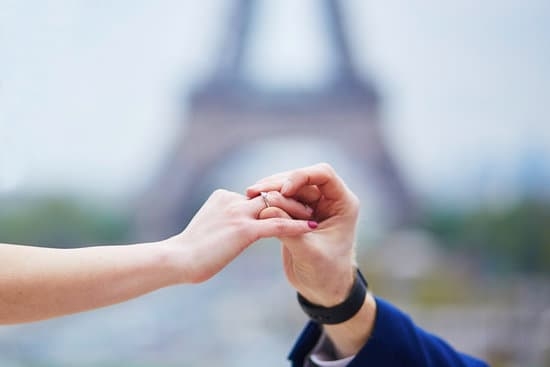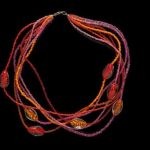The history of diamond jewelry spans centuries, with these precious stones captivating the hearts and minds of people around the world. The allure of diamond jewelry has been a constant throughout history, from ancient civilizations to the modern era. This article will explore the fascinating journey of diamond jewelry through time, shedding light on its significance and evolution.
Diamonds have held a special place in human culture for thousands of years, symbolizing wealth, power, and love. The use of diamonds in jewelry dates back to ancient times, with evidence of their adornment found in various archaeological discoveries. From ancient origins to contemporary trends, the history of diamond jewelry reflects the changing values and traditions of different societies.
In this article, we will delve into the earliest known use of diamonds in jewelry and explore how they were incorporated into the artistry of ancient civilizations such as Egypt, India, and Greece. We will also examine the resurgence of diamond jewelry during the Renaissance period in Europe and its symbolic significance during the Victorian era.
Additionally, we will discuss how diamonds have evolved into status symbols and are now synonymous with expressions of love and commitment through engagement rings. Join us on a journey through time as we uncover the rich history of diamond jewelry.
Ancient Origins
Diamonds have a long and rich history, with the earliest known use of these precious gems in jewelry dating back to ancient civilizations. In fact, diamonds have been prized for their beauty and rarity for thousands of years, making them one of the most sought-after gemstones in human history. The use of diamonds in jewelry can be traced back to ancient India, where they were first mined and used as decorative ornaments.
The ancient Indians not only adorned themselves with diamond jewelry but also believed that wearing diamonds brought them strength, courage, and invincibility. In ancient Egypt, diamonds were also highly valued and used as decorative elements in jewelry for the elite class. The Greeks, on the other hand, viewed diamonds as tears of the gods or splinters from falling stars, attributing mystical properties to these dazzling gems.
In addition to their ornamental uses, diamonds also held significant cultural and religious symbolism in these ancient civilizations. For example, in Indian culture, diamonds were associated with the divine and were often incorporated into religious artifacts and statues. This reverence for diamonds as symbols of power, divinity, and eternal love laid the foundation for their enduring popularity in jewelry through the centuries.
| Aspect | Data |
|---|---|
| Earliest known use of diamond in India | Ancient India |
| Diamond symbolism in Greek culture | Mystical properties |
| Diamond use in religious artifacts | Cultural symbolism |
Diamond Jewelry in Ancient Civilizations
Diamonds have been a coveted gemstone for centuries, with evidence of their use in jewelry dating back to ancient civilizations. The history of diamond jewelry in ancient Egypt, India, and Greece provides insight into the significance of these precious stones in early societies.
Ancient Egypt
In ancient Egypt, diamonds were not only prized for their beauty but also held spiritual significance. Diamonds were often used in amulets and talismans, believed to offer protection and bring good fortune to the wearer. The Egyptians also incorporated diamonds into their intricate jewelry designs, using them as adornments for royal crowns, pendants, and earrings.
Ancient India
Ancient India has a rich history of diamond mining and trade, leading to the widespread use of diamonds in jewelry among royalty and elites. Diamonds were adorned in elaborate headdresses, necklaces, and bracelets as a symbol of wealth and power. The Indian culture also attributed mystical properties to diamonds, believing they could bring clarity and enlightenment to the wearer.
Ancient Greece
In ancient Greece, diamonds were revered as symbols of strength and invincibility. Warriors would wear diamond-encrusted armor and helmets into battle as a talisman for protection. Additionally, Greek mythology associated diamonds with the tears of the gods or splinters from fallen stars, further adding to their allure in ancient Greek society.
The history of diamond jewelry in these civilizations illustrates the timeless appeal and significance of diamonds as a symbol of wealth, spirituality, and status throughout the ages.
The Renaissance
During the Renaissance, there was a resurgence of interest in the arts, culture, and luxury goods, including diamond jewelry. This period marked a significant shift in Europe’s history, and it also had a profound impact on the world of fashion and adornment. The use of diamonds in jewelry became more widespread among the European aristocracy and upper classes, leading to a thriving market for exquisite diamond pieces.
The Renaissance period saw the rise of skilled artisans who specialized in creating intricate and ornate diamond jewelry. These craftsmen developed new techniques for cutting and setting diamonds, resulting in breathtaking designs that showcased the beauty of these precious gemstones. Diamonds were frequently used in elaborate necklaces, earrings, brooches, and tiaras that were worn as status symbols by royalty and nobility.
Notable figures such as Queen Elizabeth I of England and Catherine de Medici of France were known for their love of diamond jewelry, further popularizing the trend across Europe. The use of diamonds in jewelry during the Renaissance reflected not only wealth and opulence but also an appreciation for artistry and craftsmanship. Indeed, many of these exquisite pieces have become treasured artifacts that provide valuable insights into the cultural and social significance of diamond jewelry during this period.
- The rise of skilled artisans specializing in diamond jewelry
- Development of new cutting and setting techniques for diamonds
- Diamond jewelry as a status symbol among European royalty and nobility
The Victorian Era
During the Victorian Era, from 1837 to 1901, diamond jewelry took on a new level of symbolism and sentimentality. This was a time when jewelry was not only about fashion but also about expressing emotions and hidden messages through the use of intricate designs and carefully chosen gemstones. The Victorians had a fascination with symbolism, and this was reflected in their diamond jewelry.
Some popular styles of diamond jewelry during the Victorian Era included:
- Lockets: These were often worn as pendants and contained a small compartment where a lock of hair, a photograph, or another sentimental item could be kept close to the wearer’s heart.
- Mourning Jewelry: Following the death of Queen Victoria’s beloved husband Prince Albert, mourning became an important social custom. Black jet and onyx were popular gemstones for mourning jewelry, often accented with diamonds to represent tears or stars in the night sky.
- Acrostic Jewelry: This style used gemstones to spell out secret messages using the first letter of each stone. For example, a ring with the gemstones Ruby, Emerald, Garnet, Amethyst, Ruby, and Diamond would spell out “REGARD.”
The Victorian Era marked a shift in the meaning of diamond jewelry from simply being decorative to carrying deep emotional significance. Diamonds were used not only for their beauty but also to convey messages of love, remembrance, and respect. This era showcased the versatility of diamonds in jewelry design and set the stage for future trends in sentimentally meaningful adornments.
Certainly, without the influence of the Victorians on diamond jewelry trends, modern designs may not have incorporated such personal touches or held such sentimental value today. The legacy of intimate narratives woven into stunning diamond pieces during this period continues to influence contemporary designers striving to infuse meaning into their creations while still showcasing the enduring beauty of diamonds.
20th Century
The 20th century saw a significant shift in the perception and use of diamond jewelry. Diamonds transitioned from being symbols of status and wealth to also becoming an integral part of engagement traditions. This era marked a turning point in the history of diamond jewelry, as diamonds became more accessible to the general public while still retaining their association with luxury and exclusivity.
The Rise of Diamonds as a Status Symbol
In the early 20th century, diamonds became synonymous with wealth and status. The De Beers company played a pivotal role in this transformation by launching successful marketing campaigns that positioned diamonds as an essential accessory for the affluent. The iconic slogan “A Diamond is Forever” became ingrained in popular culture, symbolizing eternal love and commitment.
The Evolution of Engagement Rings
During the mid-20th century, engagement rings featuring diamonds gained widespread popularity. Previously, engagement rings were not always adorned with diamonds; however, the advertising efforts of diamond companies helped solidify the tradition of proposing with a diamond ring. This tradition was further reinforced by influential figures such as royalty and celebrities, who often showcased stunning diamond engagement rings.
Changing Trends in Diamond Jewelry
As we progressed through the late 20th century, there was a shift towards more modern and diverse designs in diamond jewelry. While traditional solitaire diamond rings remained popular for engagements, other styles such as colored gemstone accents and unique settings gained traction among consumers.
Today, individuals have more options than ever when it comes to choosing diamond jewelry that reflects their personal style and preferences. Overall, the 20th century marked a period of significant transformation for diamond jewelry, shaping its role in both fashion and tradition.
Contemporary Trends
In the modern era, the history of diamond jewelry continues to evolve as new trends and designs emerge. One of the most significant shifts in contemporary diamond jewelry is the growing emphasis on ethical and sustainable sourcing. With increasing awareness about the environmental and social impact of diamond mining, consumers are seeking out ethically sourced diamonds that are mined and processed in a responsible manner.
Another trend in contemporary diamond jewelry is the rise of alternative cuts and settings. While traditional round brilliant cuts continue to be popular, there is a growing interest in unique and unconventional shapes such as pear, marquise, and emerald cuts. Additionally, innovative settings like bezel, tension, and cluster settings are gaining popularity, offering a fresh take on traditional diamond jewelry designs.
Moreover, personalization has become a key trend in modern diamond jewelry. Customization allows individuals to create one-of-a-kind pieces that reflect their personal style and preferences. From engraving meaningful messages to incorporating birthstones or colored diamonds alongside traditional white diamonds, customizing diamond jewelry has become a way for wearers to express their individuality.
As we look towards the future, it is clear that the history of diamond jewelry will continue to evolve as new technologies, cultural influences, and consumer preferences shape the designs and trends of tomorrow. Whether it’s through sustainability initiatives, innovative designs, or personalized creations, contemporary diamond jewelry reflects our changing values and tastes in the modern era.
Famous Diamonds
In conclusion, the history of diamond jewelry is a rich tapestry that spans thousands of years and multiple cultures. From its ancient origins in India and Egypt to its resurgence during the Renaissance and its status as a symbol of love and commitment in the Victorian era, diamonds have always held a special place in human history.
The 20th century saw an unprecedented rise in the popularity of diamond jewelry, as it became synonymous with luxury, wealth, and status. Today, diamond jewelry continues to evolve with contemporary trends, offering a wide range of styles and designs to suit every taste.
Throughout history, certain diamonds have captured the imagination of people around the world. From the legendary Hope Diamond to the stunning Koh-i-Noor, these famous diamonds have become iconic symbols of beauty, power, and intrigue.
Each one has its own unique story and has left an indelible mark on the history of diamond jewelry. These famous diamonds continue to inspire designers and jewelers today, serving as timeless sources of inspiration for creating exquisite pieces that will be cherished for generations to come.
As we look back on the history of diamond jewelry, it’s clear that these precious gemstones have always been revered for their rare beauty and enduring value. Whether they are worn as a symbol of love or as a statement of wealth and prestige, diamonds continue to hold a special place in our hearts.
The allure of diamond jewelry is timeless, transcending cultural boundaries and speaking to our deepest desires for beauty and elegance. As we move forward into the future, it’s certain that diamond jewelry will continue to captivate us with its timeless appeal and enduring significance.
Frequently Asked Questions
When Did Humans Start Wearing Diamonds?
Humans started wearing diamonds as early as the 4th century BC when they were mined in India. They were initially worn by ancient Hindus for their supposed mystical and protective properties.
Where Do Diamonds Originate From?
Diamonds originate from deep within the Earth’s mantle, formed under high pressure and temperature. They are brought closer to the surface through volcanic eruptions, where they can be mined for various uses.
What Is the Oldest Diamond Jewelry?
The oldest diamond jewelry discovered is believed to be a pair of earrings from Ancient Egypt, dated back to around 3000 BC. These earrings showcased the Egyptians’ advanced craftsmanship and appreciation for beauty and luxury.

Welcome to my jewelry blog! My name is Sarah and I am the owner of this blog.
I love making jewelry and sharing my creations with others.
So whether you’re someone who loves wearing jewelry yourself or simply enjoys learning about it, be sure to check out my blog for insightful posts on everything related to this exciting topic!





